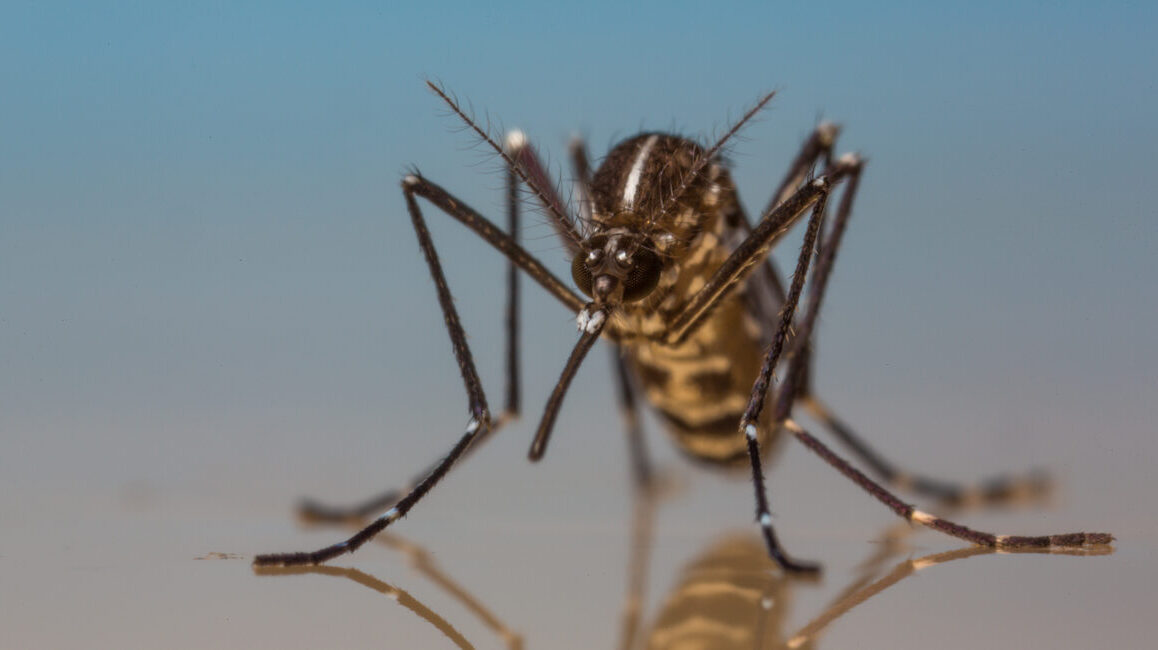New Article Explores Tiger Mosquito Population Dynamics at Small Spatial Scale

An article written by Spring 2018 and 2019-2020 Global Change Fellow Emily Reed, Michael H Reiskind, and Martha O Burford Reiskind, Life-history stage and the population genetics of the tiger mosquito Aedes albopictus at a fine spatial scale, has recently been published in the journal Medical and Veterinary Entomology. The following summary was prepared by lead author Emily Reed.
Invasive mosquitoes are both a nuisance and a serious public health risk across the globe. These impacts are forecasted to get worse with climate change. Not only can mosquitoes survive at higher latitudes with a warming climate, but they also become more active for a greater portion of the year. In addition, certain mosquito-borne viruses develop more quickly, increasing transmission risk. The tiger mosquito, Aedes albopictus, is one of the most widespread mosquitoes in the world and can transmit both human and animal diseases such as chikungunya virus, dengue virus, and dog heartworm. They thrive in human-dominated, residential environments, increasing chances of bites and disease risk (though disease occurrence is much lower in the continental United States.)
Because of their prevalence and vector status, the tiger mosquito is a control priority in the United States. However, best management strategies vary depending on location, climate, and landscape, all of which influence the mosquito population in an area. Genetic tools assess mosquito population dynamics and inform place-based control decisions. Population genetic approaches determine if the mosquito population is growing or shrinking, how genes that carry traits such as insecticide resistance spread across a landscape, and the potential for rapid adaptation to environmental changes. How mosquitoes are sampled is a big factor when using population genetic approaches. Mosquito larvae are aquatic, while adults are terrestrial. The tiger mosquito lays its eggs in small containers of water, like flowerpots and tires, which is a very different habitat with unique evolutionary pressures than the adult environment. Therefore, research to inform management must consider what life stages were sampled and take into account the potential caveats based on that sampling.
In this study, we first reviewed previous research on Aedes albopictus population genetics. Of the 101 peer-reviewed papers we identified, 40 collected more than one life stage, but none differentiated or compared results between life stages. Therefore, there is very little empirical evidence for how life stage impacts population genetic characteristics in the tiger mosquito. To begin to answer this question, we compared population genetic patterns in field-collected tiger mosquito adults and eggs at five sites in Wake County, NC. We found contrasting patterns in genetic variation, diversity, and connectivity among mosquito adults/eggs and the sites sampled. For example, eggs were more genetically different than adults at two sites, while the opposite was true at the remaining three locations.
Our research demonstrates new opportunities in the field of vector ecology to inform adaptive management strategies. When pursuing research to inform mosquito control, we recommend sampling and comparing multiple life stages while also considering study location, as it relates to the natural history of the tiger mosquito. If population genetic patterns vary between adult and immature life stages, it is likely that the magnitude and direction of those differences will depend on the surrounding landscape.
- Categories:
